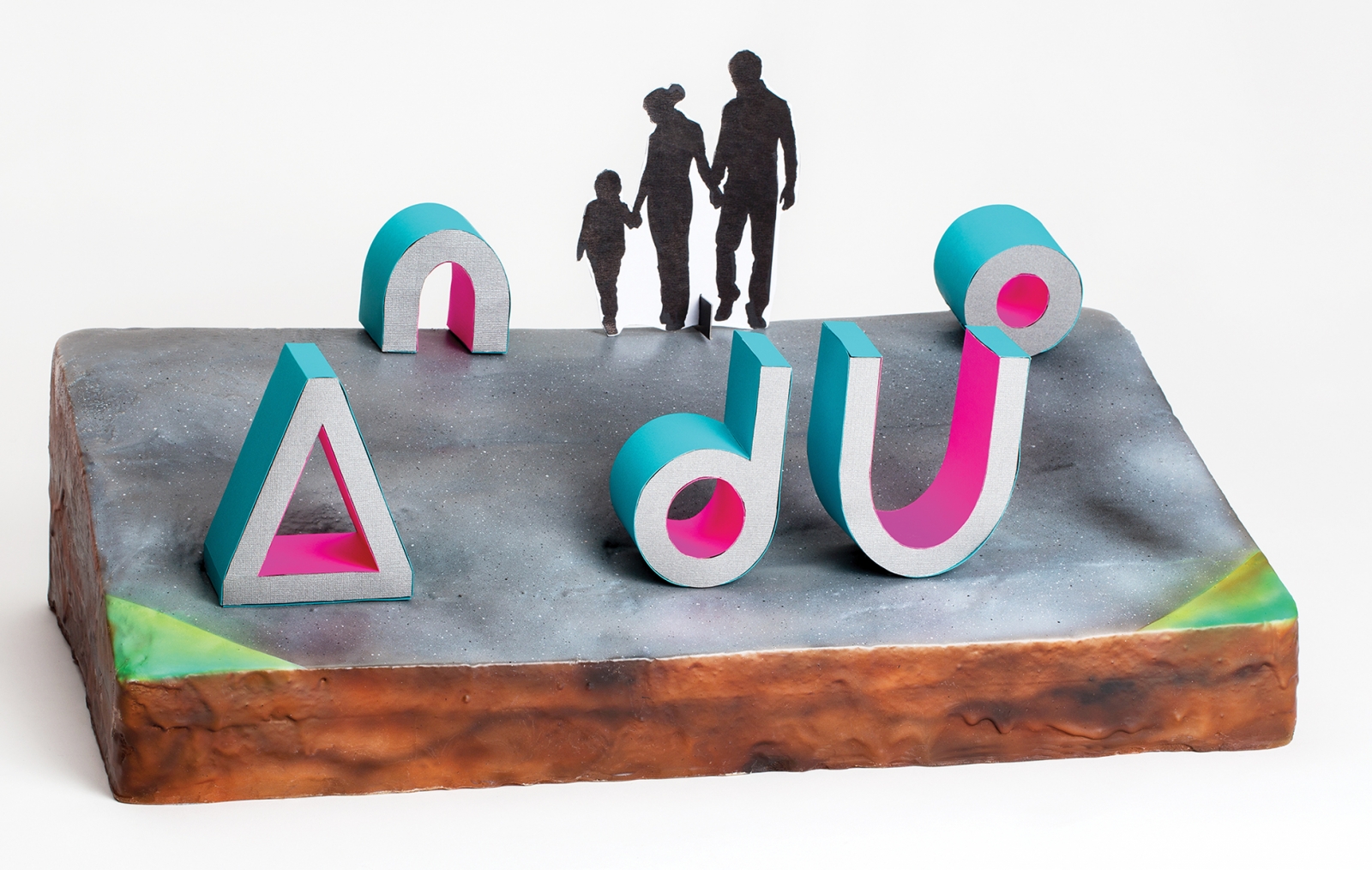“Iskotew” by Amy Malbeuf
In the area where the old Queen Elizabeth pool was once located, animal tracks wind through and red fences throughout the space give notice that this is a construction zone, but there are signs of things to come.
A large amphitheatre of sorts is being built where the pool, closed in 2004, once operated. To the north, two large rocks stick out from the snow like erratics from a previous ice age. Nearby stands a series of brightly coloured, six-foot high Cree syllabics, forming the word for “fire.”
By the end of 2018 this will be NW River Lot 11, Edmonton’s first outdoor Indigenous Art Park. NW, pronounced ee-nu, means “I am of the Earth” in Cree, while River Lot 11 was once the home to Mtis homesteader Joseph MacDonald.
The collection was curated by Candice Hopkins of the Carcross Tagish First Nation, a noted scholar who’s curated art at the National Gallery of Canada and the IAIA Museum of Contemporary Native Arts in Santa Fe, New Mexico. In all, six public art pieces will be installed in the park, all created by Canadian Indigenous artists, some from the Edmonton area and some who studied in Edmonton.
“I thought they made great selections because they are so varied and I think people will experience the park nicely because of the works they’ve selected,” says Edmonton Mtis artist and architect Tiffany Shaw-Collinge, whose work, “Pehonan,” is part of the park. “Indigenous artists push the boundaries on a lot of fronts, and it’s kind of nice to be in a cohort of other Indigenous artists who are so remarkable in their explorations.”
As early as 2013, the Edmonton Arts Council (EAC) held visioning workshops to engage Indigenous community members and artists, as well as the general public, in the development of the park. That process of listening to elders, community members, learning about the history of the place (before and after European contact) and participating in Indigenous ceremonies like sweats and smudges brought a lot of new knowledge to the EAC Public Art department.
